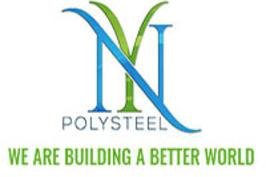FAST-FOOT
Why is Fastfoot® Green?
Sustainable and livable buildings start with a foundation that minimizes construction waste, prevents pollution and is cost effective.
1 – Conserves Natural Resources
A single roll of Fastfoot® forms the same footing as 200 lineal feet of lumber, representing a dramatic increase in efficiency. Footing lumber is discarded after several reuses because of alkaline damage. Fastfoot® protects all lumber and stakes from concrete.
The photo on the right shows the typical footing lumber on a residential foundation in Vancouver BC. The photo insert shows Fastfoot® with sewn corners, where not a single piece of lumber was used to form the concrete. The fabric stays in place to prevent ground moisture from entering the foundation concrete.
2 – Prevents Ground Water Pollution
Fastfoot® is a damp proof membrane and prevents concrete toxins from contaminating sensitive ground water. With lumber footing forms, the concrete is in direct contact with the ground, and cement fines enter the groundwater, contaminating spawning and wildlife habitat
3 – Provides a Drier, Healthier Indoor Environment
The Fastfoot® membrane prevents moisture from wicking up through the concrete footing into the home. This prevents mold and fungi that grow in damp environments and can cause severe respiratory infections and allergic reactions.
Concrete is ‘hygroscopic‘, meaning ground moisture wicks up through the footing concrete and inside the building. Fastfoot® is a vapor barrier which prevents this wicking.
4 – Contributes to LEED® Points
There are seven categories where Fastfoot® contributes:
1 – Sustainable SitesPrereq 1Construction Activity Pollution PreventionWith lumber footing forms, concrete is poured directly on the ground, contaminating the water table with cement toxins. With Fastfoot® the concrete is poured into a membrane, preventing all ground water contamination.
2 – Materials & ResourcesPrereq 1Storage & Collection of RecyclablesLumber formed concrete footings are not environmental because of transportation, storage, and waste. Approximately 35% of lumber forms are sent to the landfill. Fabric forms are very green: 300 times lighter and 1% the space of lumber, and stay in place to prevent ground moisture entering the concrete and causing mold and health issues.
3 – Materials & ResourcesCredit 2.1Construction Waste Management: Divert 50% from DisposalFabric forms divert 100% of forming materials from disposal. Any lumber used is completely protected by Fastfoot® from concrete damage and is reused.
4 – Materials & ResourcesCredit 8 (Canada)Durable BuildingFastfoot® prevents rapid hydration leading to stronger and more durable concrete. Lumber forms lead to excessive drying and weaker concrete.
5 – Materials & ResourcesCredit 8 (Canada)Durable BuildingFastfoot® eliminates rising damp, thereby preventing the deterioration of the building structure and interior finishes from mold and dampness
.6 – Indoor Environmental QualityCredit 3.1Construction IAQ Management Plan: during ConstructionFabric forms for footings stay in place to act as a permanent membrane, preventing rising damp through the concrete and into the building interior. Elevated moisture levels are linked to mold and the proliferation of other indoor air borne pathogens that directly affect human health.
7 – Innovation & Design ProcessCredit 1.1Innovative Performance not specifically addressed by LEED®Fabric formwork for concrete footings is a dramatic innovation over temporary lumber forms. This technology is not only more efficient than lumber forms, but offers ongoing benefits to the building occupants for the life of the structure.



